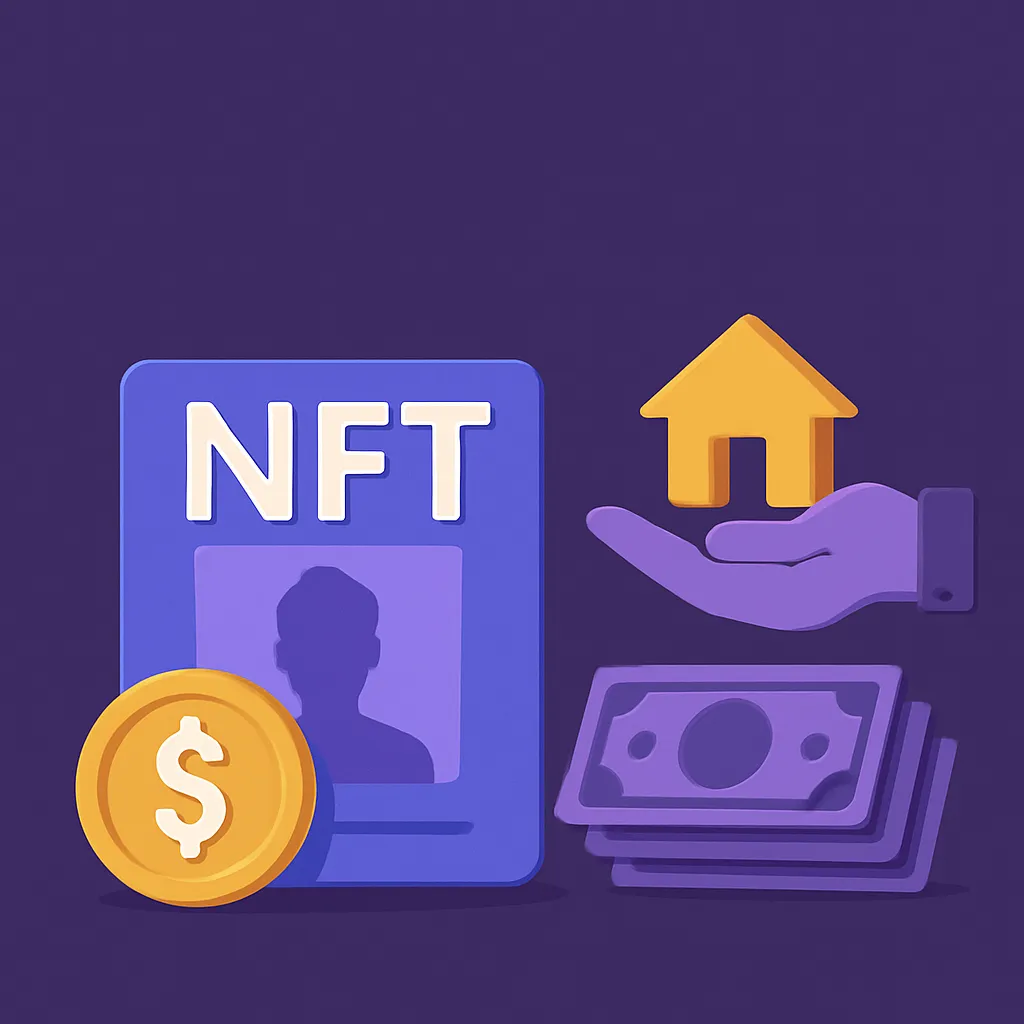
What is NFT Lending? A Financial Model for NFTs
1. Introduction to NFT Lending
NFT Lending is a financial mechanism in the NFT space that allows NFT holders to use their digital assets as collateral to borrow tokens such as ETH or USDT. After a predetermined period, the borrower must repay the loan plus interest to reclaim their NFT.
This process is similar to lending models in DeFi or traditional asset-backed loans in the real world. As the NFT market often has low liquidity and smaller market capitalization, selling NFTs can be time-consuming. NFT lending enables holders to access capital more easily while improving liquidity in the NFT market.
2. How NFT Lending Works
NFT owners can typically borrow up to 50% of their NFT's value, with interest rates ranging from 20% to 80%. The entire transaction is executed via smart contracts, ensuring transparency and security.
Basic Process:
The borrower and lender agree on terms such as interest rate, loan amount, and duration.
The borrower transfers the NFT into a vault managed by a smart contract.
The lender deposits the loan amount into the vault.
The smart contract releases the funds to the borrower and locks the NFT during the loan period.
If the borrower fails to repay on time, the smart contract automatically liquidates the NFT.
3. NFT Lending Models
1. Peer-to-Peer (P2P) Lending
This model involves direct lending between users without intermediaries. Borrowers and lenders negotiate terms individually.
Example: User A wants to borrow and collateralize an NFT. User B agrees to lend under agreed conditions. If A defaults, the NFT is transferred to B.
Platforms: NFTfi, X2Y2
2. Peer-to-Protocol Lending
In this model, the borrower deposits their NFT and borrows from a liquidity pool. Lenders contribute liquidity and earn interest. A dApp manages the pool and transactions.
Advantages: Quick capital access for borrowers.
Disadvantages: Less flexibility in customizing loan terms.
3. Collateralized Debt Position (CDP)
CDPs allow users to collateralize NFTs and receive project-native tokens such as DAI or PUSd.
Benefits: Increases liquidity and yields for the platform with lower interest rates.
Drawback: Borrowers must over-collateralize, e.g., deposit 132% of the borrowed amount.
4. Rental NFT
This model allows users to rent NFTs for a set duration and enjoy associated benefits such as whitelist access or VIP membership.
After the rental period, the NFT is automatically returned to the owner.
5. Buy Now Pay Later (BNPL)
BNPL enables users to purchase NFTs via installment plans. The NFT is held in escrow until full payment is completed.
If the buyer cannot continue payments, the NFT is liquidated by the platform.
4. NFT Lending Ecosystem
Although NFT Lending is a vital segment of the NFT market, the ecosystem is still in its early development phase.
Currently, the Total Value Locked (TVL) in NFT lending accounts for approximately 20%-30% of the total NFT market capitalization.
This figure is expected to grow to 25%-40% in 2025.
5. Notable Projects:
NFTfi: Launched in 2022, with a total loan volume reaching $450 million.
BendDAO: Launched in March 2022, allows only blue-chip NFTs to be used as collateral.